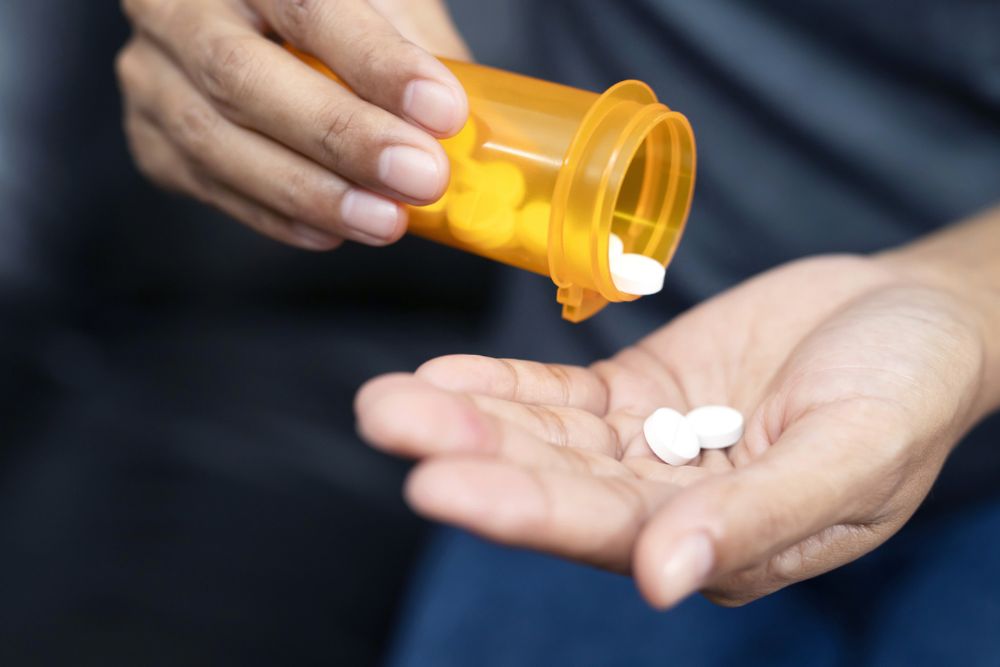Untangling the Connection Between Chronic Pain and Addiction

Published: June 11, 2024
Chronic pain and addiction are two of the most challenging public health issues facing our society today. Often intertwined, they present a complex problem where pain management can potentially lead to addiction, particularly concerning opioids. Let’s explore the connection between chronic pain and addiction, shedding light on the opioid crisis and offering insight into effective management strategies that prioritize patient safety and well-being.
The Burden of Chronic Pain
Chronic pain is defined as pain that lasts longer than three months and can persist well beyond the normal healing time of an injury. According to a study from the National Institutes of Health, there were more new cases of chronic pain per year (52.4 cases out of 1,000 people) than other common chronic conditions, including diabetes (7.1 cases/1,000), depression (15.9 cases/1,000), and hypertension (45.3 cases/1,000).
Chronic pain affects an estimated 50 million U.S. adults and can be debilitating, affecting an individual’s quality of life, ability to work, and mental health.
The Rise of Opioid Use
Opioids, including prescription medications such as oxycodone, hydrocodone, and morphine, have historically been prescribed to treat moderate to severe pain. While effective for pain relief, opioids have a high potential for dependency and addiction. According to a review published in The Journal of the International Association for the Study of Pain, 21-29% of patients prescribed opioids for chronic pain misuse them, with about 8-12% becoming addicted.
The Opioid Crisis: A Snapshot
Overdose Deaths: The CDC reports that nearly 70% of the 67,000 drug overdose deaths in 2018 were due to opioids.
Economic Burden: The U.S. Congress Joint Economic Committee (JEC) estimates that the opioid crisis has cost the U.S. economy $1.04 trillion in 2018, $985 billion in 2019 and nearly $1.5 trillion in 2020, including healthcare expenses, lost productivity, and addiction treatment costs.
Linking Chronic Pain and Addiction
The pathway from chronic pain to addiction often begins with the prescription of opioids for pain relief. Over time, tolerance to these medications can develop, leading individuals to higher doses, which increases the risk of addiction. Furthermore, the psychological components of chronic pain, such as anxiety and depression, can exacerbate dependency, creating a vicious cycle of pain and substance use.
Rockland Treatment Center’s Approach to Opioid Addiction
At Rockland Treatment Center, our focus is on treating opioid addiction with comprehensive, evidence-based strategies. Our approach includes:
- 12-step Participation: Throughout your treatment, self-help meetings will be available to you.
- Neurofeedback: This is direct training of the brain to learn to function more efficiently.
- Interactive Journaling: An ongoing process of recording your thoughts and feelings.
- Art Therapy: The ability to express yourself through creativity helps in the healing process.
- Nutritional and Dietary needs addressed: Proper diet and supplements enhance your recovery.
- Group, individual, and family therapies.
Start Your Recovery at Rockland Treatment Center
Opioid addiction is a complex but treatable condition. At Rockland Treatment Center, we are committed to providing tailored treatment plans that address both the physical and psychological aspects of addiction.
If you or a loved one is struggling with opioid dependency, reach out to us. Our team of experts is here to guide you through every step of recovery, ensuring you have the tools and support necessary for a successful journey back to health.
